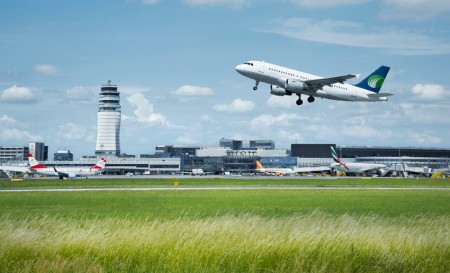AIRPORTS NEED NOT BE THE COVID-19 SCAPEGOAT
The reopening of most international borders to business and tourism travel in May-June this year was welcomed with relief by all, but this relief was short-lived. Within a few months – and certainly by mid- to late August – the pandemic’s dreaded second wave was already there in full force.
The surge of new infections has seen governments struggling, in particular in the Central and Eastern European (CEE) region where officials are finding it difficult to reintroduce restrictions in the face of strong opposition from citizens and businesses. Instead, governments are implementing measures that are particularly detrimental to the travel industry such as Hungary refusing entry to international travellers unless they result negative to a COVID-19 test performed in Hungary.
 But it would be a mistake to believe that curtailing international travel – whether for business or tourism – has no impact on a country’s economy. Moreover, airports and airplanes are amongst the safest ways to travel. But this is a little known fact and, according to Andrzej Milaszewicz, Managing Director Duty Free at Lagardère Poland, shows a lack of coordinated international communication.
But it would be a mistake to believe that curtailing international travel – whether for business or tourism – has no impact on a country’s economy. Moreover, airports and airplanes are amongst the safest ways to travel. But this is a little known fact and, according to Andrzej Milaszewicz, Managing Director Duty Free at Lagardère Poland, shows a lack of coordinated international communication.
“Not a lot has been done so far in terms of structured, professional communication on the fact that flying by aircraft is the safest way of mass transportation,” he says. “For example Air circulation in the cabin is enhanced with special filters killing almost 100% of viruses. There is also less rotation each day for a single airplane so that airlines can spend more time on decontamination and there are also longer time gaps before welcoming new passengers on board.”
The frustration comes from a climate of fear that has been created with diverging information from official and unofficial sources, which creates confusion amongst travellers and curtails air travel. Airports are contained environments that are relatively easy to keep under control, but managing people’s flow, as explained by Milasewicz, can be a challenge.
“You can not move very freely between areas, floors etc.” He explains. “There is only one dedicated entrance to the terminals (for example in Warsaw) and it is limited to those who have a valid boarding pass. Access is given only at the departure level; there is no access to the terminal through the arrival level, which was the case before. This means no visitors, no friends and no family to wish farewell to departing passengers.”
This has a detrimental effect on commercial activity within the airport, with Milasewicz stressing that the measures currently in place at Polish airports mean that “all commercial activity placed landside is, in fact, dead.”
This is one of the many measures that have been implemented by national governments that go much further than in the domestic markets – for instance there is no restriction to entry in shopping malls in Poland – and adding to that a general lack of support for the airport industry in many CEE countries and the general concerns of the population about what rules apply and what countries they can travel to or from (and the constant and short-noticed changes) means that the situation is problematic, to say the least.
But it doesn’t need to be that way. As explained above – and as the airline industry tries to communicate, albeit on limited fora – air travel is most likely the safest and most sanitised mass transportation environment. Airports have taken huge steps towards ensuring as safe an environment as possible for passengers and staff alike and are prepared to do more, if needed.
 “The health and safety of all passengers and employees are the top priority at Vienna Airport,” explains Julian Jäger, Joint CEO and COO of Vienna Airport. “For this purpose, Vienna Airport has been in close consultation with Austrian authorities since the beginning of the COVID-19 crisis. Several measures have been specified on how to maintain the minimum social distancing and ensure that people wear a mouth-nose protective mask. Furthermore, the body temperature of all arriving passengers is measured by means of thermal imaging cameras. Any conspicuous results are immediately examined by health authorities. There is also the possibility to undergo a PCR test directly on the airport premises to quickly identify infections.”
“The health and safety of all passengers and employees are the top priority at Vienna Airport,” explains Julian Jäger, Joint CEO and COO of Vienna Airport. “For this purpose, Vienna Airport has been in close consultation with Austrian authorities since the beginning of the COVID-19 crisis. Several measures have been specified on how to maintain the minimum social distancing and ensure that people wear a mouth-nose protective mask. Furthermore, the body temperature of all arriving passengers is measured by means of thermal imaging cameras. Any conspicuous results are immediately examined by health authorities. There is also the possibility to undergo a PCR test directly on the airport premises to quickly identify infections.”
Vienna Airport has also implemented an enhanced sanitation schedule, increasing the frequency at which the airport (handrails, doorknobs, sanitary facilities, ventilation systems filters, etc.) are cleaned to ensure the airport ecosystem is as safe and clean of germs as possible. Coupled with the implementation of proper international standards, there is no reason why international travel should be curtailed and Jäger says that the European Aviation Safety Agency (EASA) is working on developing and implementing a set of rules and regulations that can be applied throughout the region.
This is also a process where airports can play an active role. “Vienna Airport is actively contributing to the process of implementing international standards for efficient protective measures in close consultation with the Federal Ministry for Climate Action, Environment, Energy, Mobility, Innovation and Technology as well as the responsible Austrian authorities,” Jäger explains. “As an EASA test airport, our experiences with respect to the current COVID-19 measures are being incorporated into developing future European regulations.”
Special attention should also be paid to technologies that monitor the number of people in any given space – to reinforce social distancing; that measure body temperature with minimum disruption in travellers’ flow; that allow for quick, safe and economical sanitisation of travellers – through the use of sanitising gates, for example; and more that are available in the world today and have already been implemented at several airports around the world.
By working together, communicating effectively and, most importantly, by showing governments that airports need not be the scapegoat of COVID-19 infections but rather an environment that is safe, clean and can keep on being an active contributor to a country’s economy – as they have been for many years – solutions can be implemented to reinstate traveller confidence that international travel is possible and risk-free.
For download please go to the tab NEWS UPDATE

